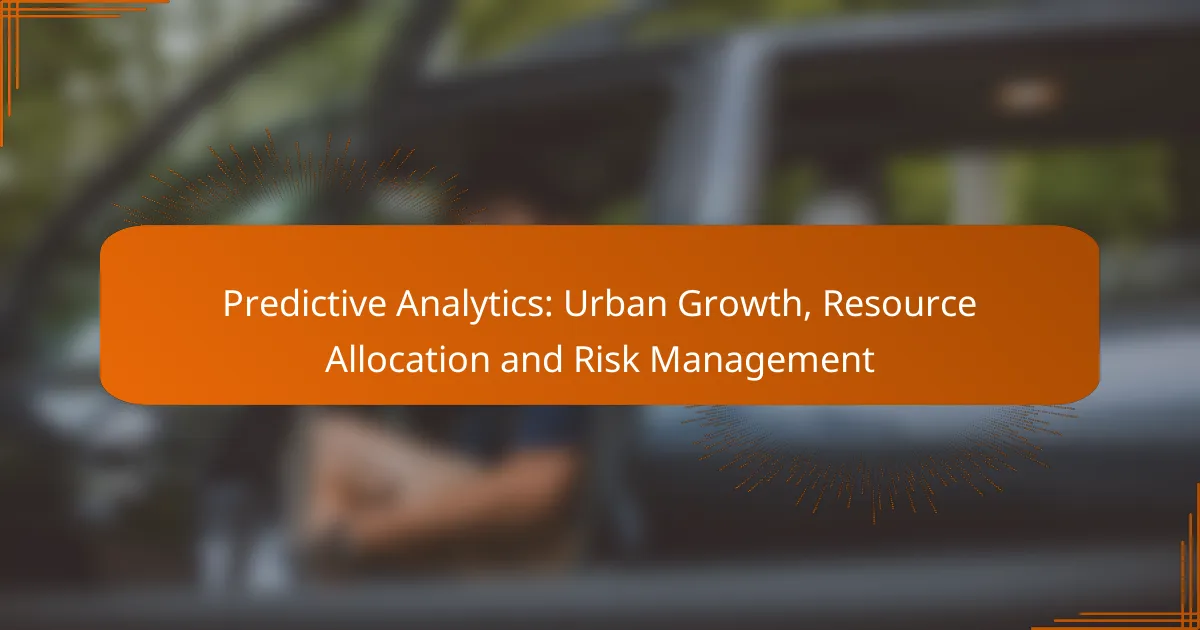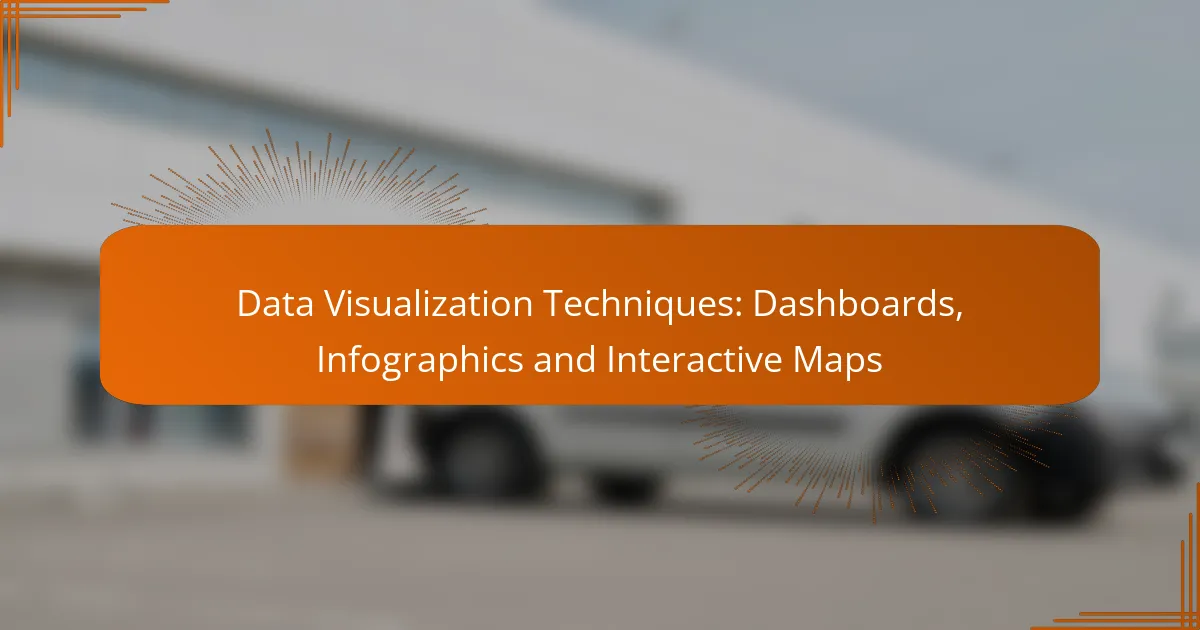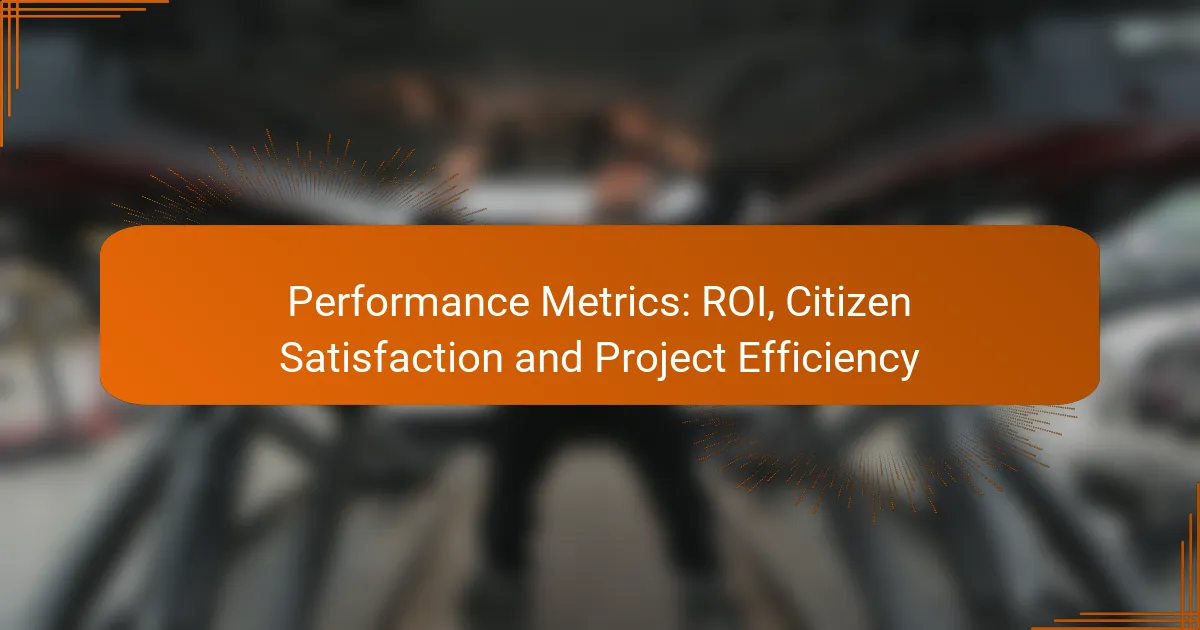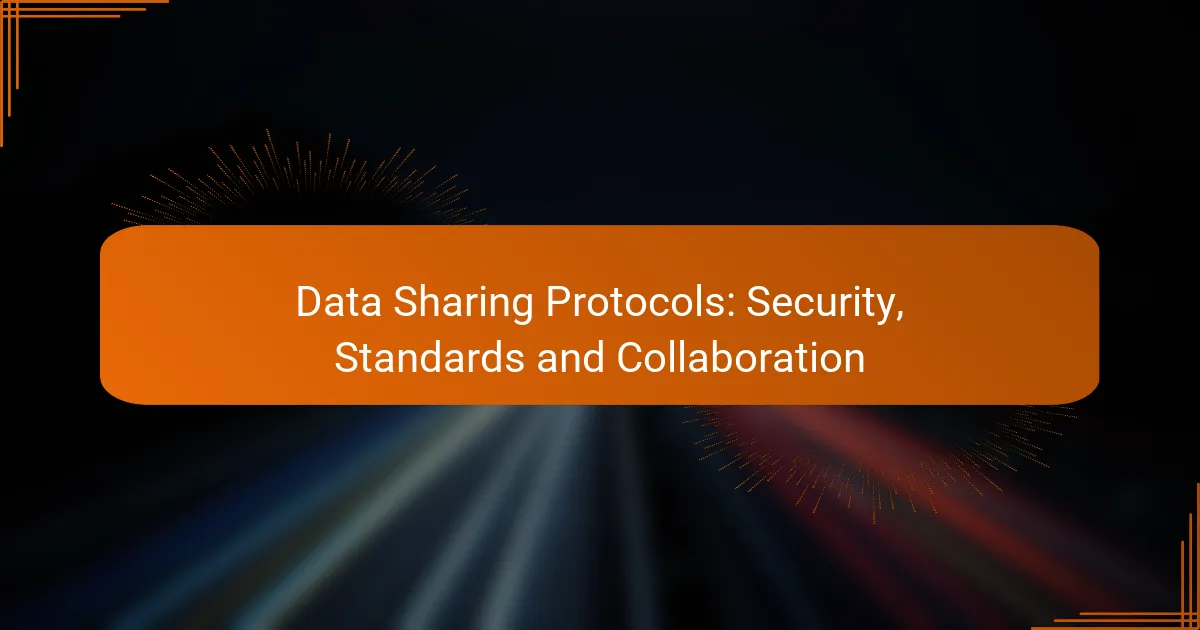Predictive analytics plays a crucial role in shaping urban growth by utilizing data to forecast trends and guide decision-making. This method empowers city planners and policymakers to allocate resources more effectively, optimize infrastructure, and enhance community well-being. Additionally, it strengthens risk management by anticipating potential threats and enabling informed responses through the analysis of historical data and trends.
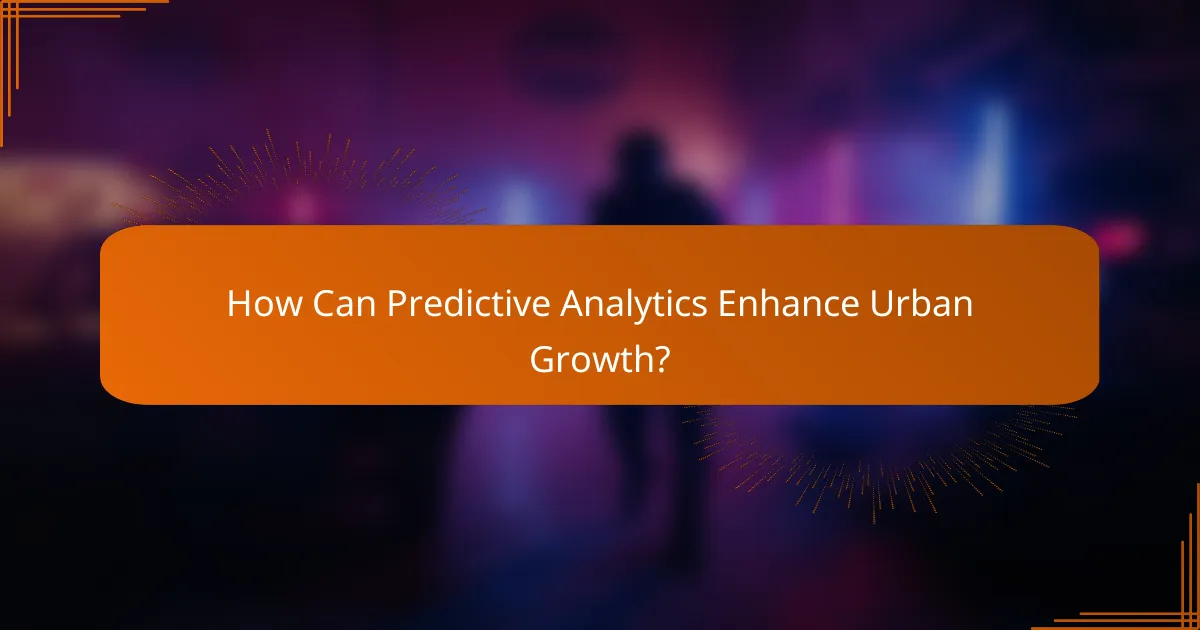
How Can Predictive Analytics Enhance Urban Growth?
Predictive analytics can significantly enhance urban growth by leveraging data to forecast trends and inform decision-making. This approach allows city planners and policymakers to allocate resources efficiently, optimize infrastructure, and improve overall community well-being.
Improved infrastructure planning
Predictive analytics enables urban planners to anticipate future infrastructure needs based on population growth and demographic shifts. By analyzing historical data and trends, cities can identify areas requiring upgrades or new developments, ensuring that resources are allocated effectively.
For example, a city experiencing rapid population growth may use predictive models to determine where to build new roads, schools, or hospitals. This proactive approach minimizes disruptions and maximizes the utility of public investments.
Data-driven zoning decisions
Utilizing predictive analytics in zoning decisions allows municipalities to create more effective land use policies. By analyzing data on housing demand, economic activity, and environmental impacts, cities can make informed choices about zoning regulations that support sustainable growth.
For instance, a city might analyze trends in residential development to adjust zoning laws that encourage mixed-use areas, promoting both housing and commercial spaces. This can lead to vibrant neighborhoods that meet the needs of residents and businesses alike.
Traffic management optimization
Predictive analytics can optimize traffic management by forecasting congestion patterns and identifying potential bottlenecks. By analyzing real-time traffic data and historical trends, cities can implement strategies to improve traffic flow and reduce delays.
For example, a city might use predictive models to adjust traffic signal timings based on expected traffic volumes, leading to smoother commutes. Additionally, integrating data from public transportation can help in planning routes that accommodate peak travel times.
Public service efficiency
By applying predictive analytics, urban areas can enhance the efficiency of public services such as waste management, emergency response, and utilities. Analyzing usage patterns and service demands allows for better resource allocation and improved service delivery.
For instance, a city might predict waste collection needs based on population density and seasonal trends, optimizing collection routes and schedules. This not only saves costs but also improves service reliability for residents.
Community engagement strategies
Predictive analytics can inform community engagement strategies by identifying key issues and areas of concern among residents. By analyzing feedback and participation data, cities can tailor outreach efforts to foster greater public involvement in urban planning processes.
For example, a municipality might use data to determine which neighborhoods have lower engagement in public meetings and target those areas with specific outreach campaigns. This ensures that diverse voices are heard and considered in decision-making, ultimately leading to more inclusive urban growth.
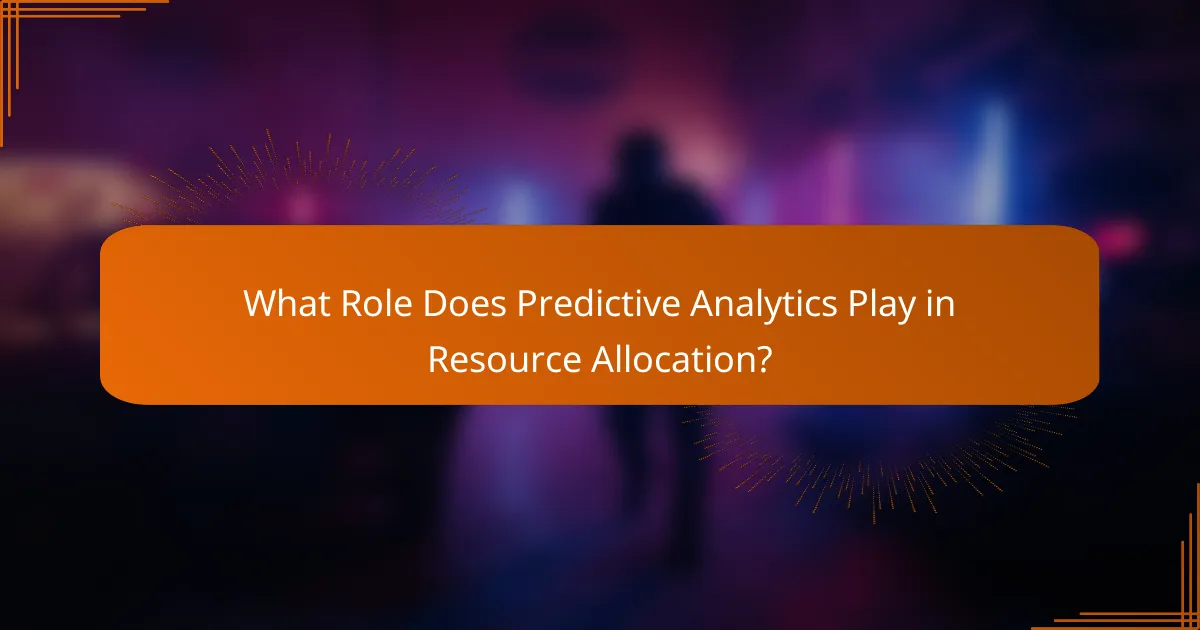
What Role Does Predictive Analytics Play in Resource Allocation?
Predictive analytics enhances resource allocation by using data-driven insights to inform decision-making. This approach enables organizations to allocate resources more efficiently, ensuring that they meet current and future demands effectively.
Optimizing budget distribution
Predictive analytics allows organizations to analyze historical spending patterns and project future financial needs. By identifying areas where funds are underutilized or overspent, decision-makers can adjust budgets accordingly, leading to more effective financial management.
For example, a city government may use predictive models to allocate funds for infrastructure projects based on population growth forecasts, ensuring that resources are directed to the most critical areas.
Identifying resource needs
Through data analysis, predictive analytics helps organizations pinpoint specific resource requirements before they become critical. This proactive approach minimizes shortages and ensures that necessary supplies and personnel are available when needed.
For instance, a healthcare facility can use predictive tools to determine staffing levels based on projected patient inflow, allowing for better planning and improved patient care.
Forecasting demand trends
Predictive analytics enables organizations to anticipate changes in demand for services or products. By examining trends and patterns, businesses can prepare for fluctuations, ensuring they have the right resources at the right time.
A retail company might analyze seasonal buying patterns to stock inventory more effectively, reducing excess stock and avoiding missed sales opportunities during peak periods.
Enhancing service delivery
By leveraging predictive analytics, organizations can streamline service delivery processes, improving efficiency and customer satisfaction. Insights gained from data can help optimize workflows and resource allocation.
For example, a public transportation authority can use predictive models to adjust bus schedules based on anticipated ridership, ensuring that services are available when and where they are most needed.
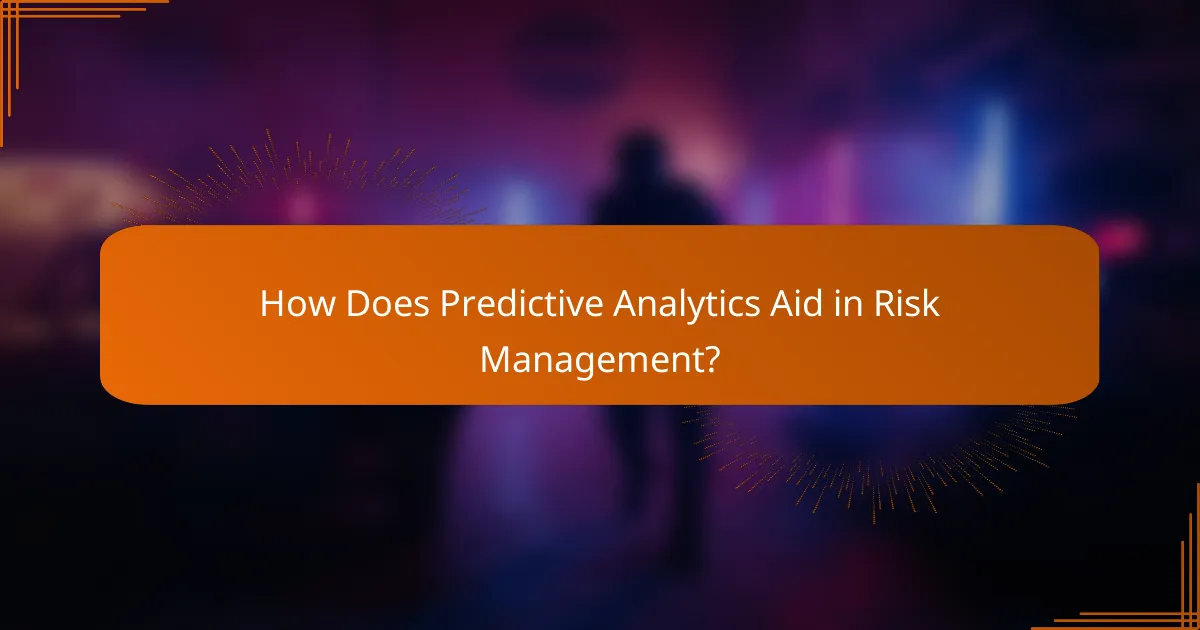
How Does Predictive Analytics Aid in Risk Management?
Predictive analytics enhances risk management by utilizing data-driven insights to anticipate potential threats and optimize responses. By analyzing historical data and trends, organizations can make informed decisions to mitigate risks effectively.
Disaster preparedness
Predictive analytics plays a crucial role in disaster preparedness by forecasting natural disasters such as floods, hurricanes, and earthquakes. By analyzing weather patterns and historical data, agencies can develop early warning systems that alert communities and allocate resources efficiently.
For instance, cities can use predictive models to identify high-risk areas and implement evacuation plans or resource distribution strategies in advance. This proactive approach can significantly reduce the impact of disasters on lives and property.
Crime prediction models
Crime prediction models leverage historical crime data to forecast potential criminal activity in specific areas. Law enforcement agencies can use these insights to allocate patrols and resources more effectively, focusing on high-risk neighborhoods.
For example, predictive analytics can identify patterns in burglary or violent crime, allowing police departments to implement targeted interventions. However, it is essential to balance these models with community engagement to avoid negative perceptions and ensure public trust.
Environmental risk assessment
Environmental risk assessment utilizes predictive analytics to evaluate potential hazards such as pollution, climate change, and resource depletion. By analyzing environmental data, organizations can identify vulnerable ecosystems and develop strategies to mitigate risks.
For instance, predictive models can assess the impact of industrial activities on air and water quality, guiding regulatory measures. Stakeholders can prioritize actions based on risk levels, ensuring sustainable resource management and compliance with environmental regulations.
Financial risk mitigation
Predictive analytics aids in financial risk mitigation by analyzing market trends and consumer behavior to forecast economic downturns or financial crises. Businesses can use these insights to adjust their strategies, manage cash flow, and minimize losses.
For example, companies can implement predictive models to assess credit risk and make informed lending decisions. By understanding potential financial threats, organizations can develop contingency plans and allocate resources to safeguard their assets effectively.
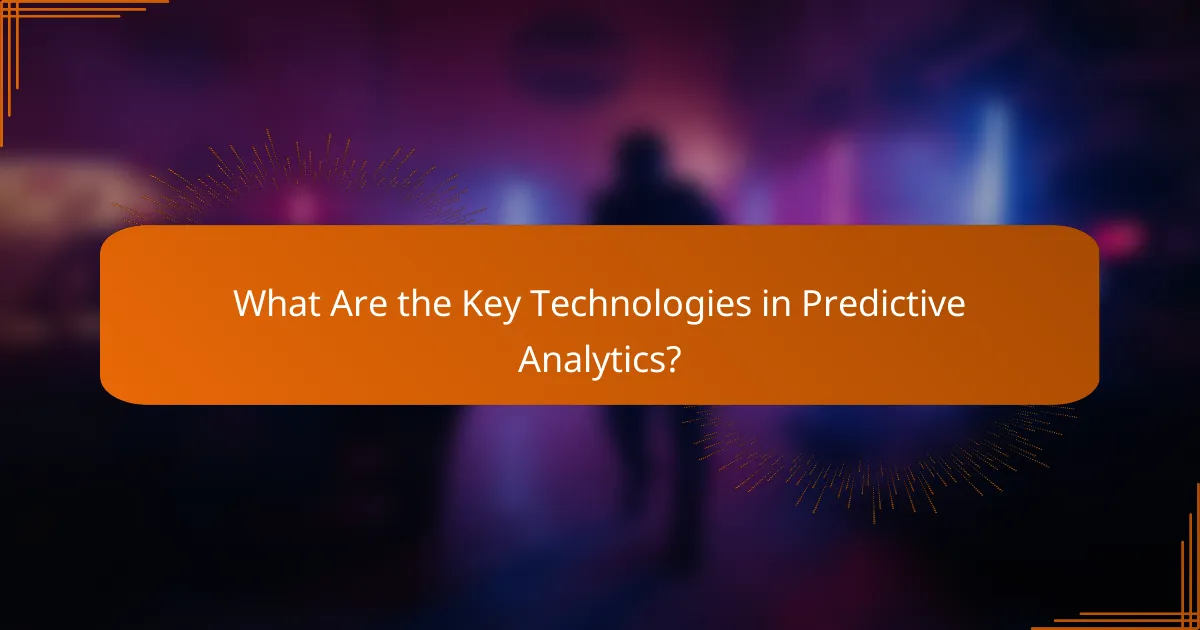
What Are the Key Technologies in Predictive Analytics?
Key technologies in predictive analytics include machine learning algorithms, big data platforms, and geospatial analysis tools. These technologies enable organizations to analyze vast amounts of data, identify patterns, and make informed decisions regarding urban growth, resource allocation, and risk management.
Machine learning algorithms
Machine learning algorithms are essential for predictive analytics as they can learn from data and improve over time. Common types include supervised learning, unsupervised learning, and reinforcement learning, each serving different purposes in data analysis.
For example, supervised learning can predict future trends based on historical data, while unsupervised learning can identify hidden patterns in datasets without prior labeling. Choosing the right algorithm depends on the specific problem and the nature of the data.
Big data platforms
Big data platforms are crucial for handling the large volumes of data generated in urban environments. These platforms, such as Apache Hadoop and Spark, allow for the storage, processing, and analysis of vast datasets efficiently.
Organizations should consider scalability, flexibility, and integration capabilities when selecting a big data platform. For instance, a platform that supports real-time data processing can significantly enhance decision-making processes in resource allocation.
Geospatial analysis tools
Geospatial analysis tools are vital for visualizing and interpreting spatial data related to urban growth and resource management. Tools like Geographic Information Systems (GIS) enable users to map and analyze data in a geographical context.
These tools help in identifying trends, such as population density or resource distribution, which can inform urban planning decisions. When using geospatial analysis, it’s important to ensure data accuracy and consider regulatory requirements regarding data usage in specific regions.
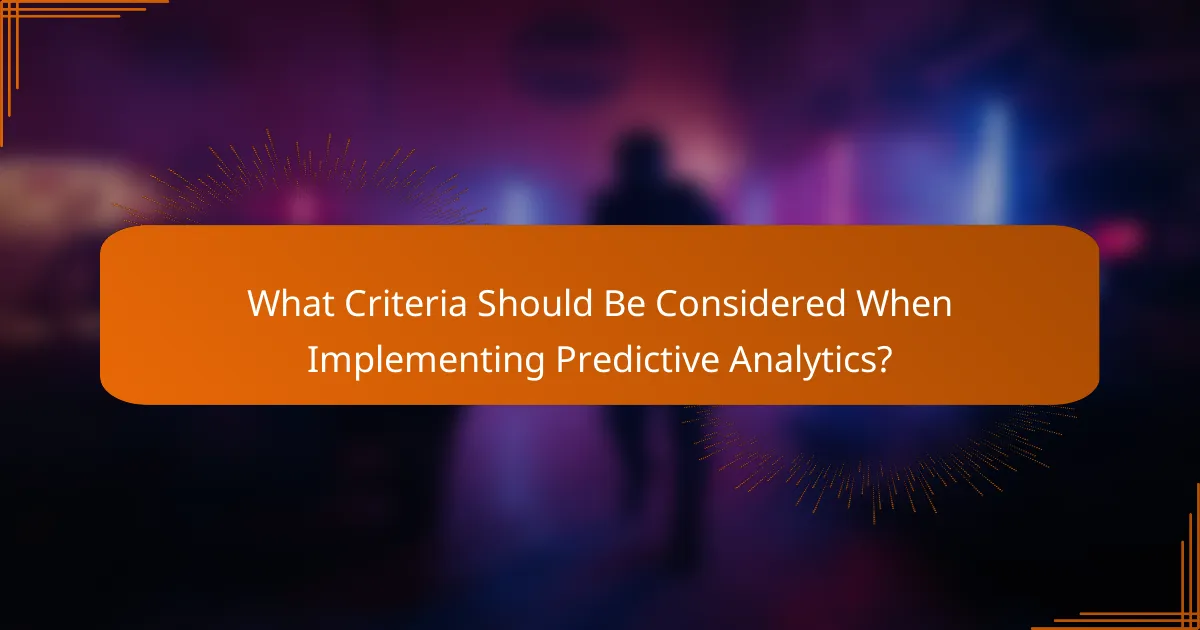
What Criteria Should Be Considered When Implementing Predictive Analytics?
When implementing predictive analytics, organizations should consider data quality, the relevance of algorithms, and the specific goals of the analysis. These criteria ensure that the insights generated are accurate, actionable, and aligned with the organization’s objectives.
Data Quality and Availability
Data quality is crucial for effective predictive analytics. Ensure that the data is accurate, complete, and timely. Poor data can lead to misleading predictions, so it’s essential to establish robust data collection and cleaning processes.
Additionally, assess the availability of historical data. Having access to relevant historical data allows for more accurate modeling and better predictions. Organizations should consider integrating various data sources, such as public records, sensor data, and social media, to enrich their datasets.
Algorithm Selection
The choice of algorithms significantly impacts the effectiveness of predictive analytics. Different algorithms serve different purposes, such as regression for forecasting or classification for risk assessment. Organizations should evaluate their specific needs and choose algorithms that align with their objectives.
It’s also important to consider the complexity of the algorithms. While advanced algorithms like neural networks can provide powerful insights, they may require more data and computational resources. Simpler models may be more appropriate for smaller datasets or when interpretability is crucial.
Business Objectives and Use Cases
Clearly defined business objectives are essential for successful predictive analytics implementation. Organizations should identify specific use cases, such as urban growth forecasting or resource allocation optimization, to guide their analytics efforts. This focus helps in aligning analytics initiatives with strategic goals.
Establishing key performance indicators (KPIs) related to these objectives can help measure the success of predictive analytics. For example, if the goal is to improve resource allocation, relevant KPIs might include cost savings or increased efficiency in service delivery.
Regulatory and Ethical Considerations
Organizations must navigate various regulatory and ethical considerations when implementing predictive analytics. Compliance with data protection regulations, such as GDPR in Europe, is critical to avoid legal issues. Organizations should ensure that data collection and usage practices respect individual privacy.
Ethical considerations also play a role in predictive analytics. It’s essential to avoid biases in data and algorithms that could lead to unfair outcomes. Regular audits and assessments can help identify and mitigate potential biases, ensuring that predictive models are fair and equitable.
